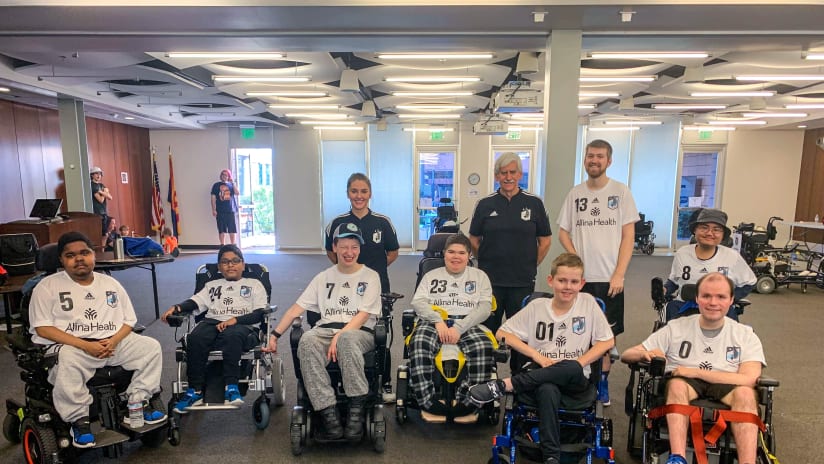Both Inclusivity and Soccer are among Minnesota United’s core community pillars. That means that we believe in a world where anyone and everyone has a chance to engage with the beautiful game that we love so much. That’s why the club is proud to partner with Allina Health’s Courage Kenny Rehabilitation Institute to sponsor not one, but two Power Soccer teams!
Since we began this partnership in 2022, behind the support of Allina Health, we’ve seen the program grow tremendously, touching lives and giving some of the region’s most talented power soccer players a chance to showcase their talents. In December 2024, we added the MNUFC Power Soccer Academy team to give more players a chance to get involved and develop their skills as part of our incredible team.
Our Power Soccer Teams are just as much a part of our club as any other team that wears the crest. Make sure to look out for future Power Soccer news on this page, club newsletters, Center Circles, or other emails to get a heads up on when they’ll be playing and how you can support them!
If you’re not already familiar with this incredible, highly competitive sport, here’s a breakdown of how it works.





























